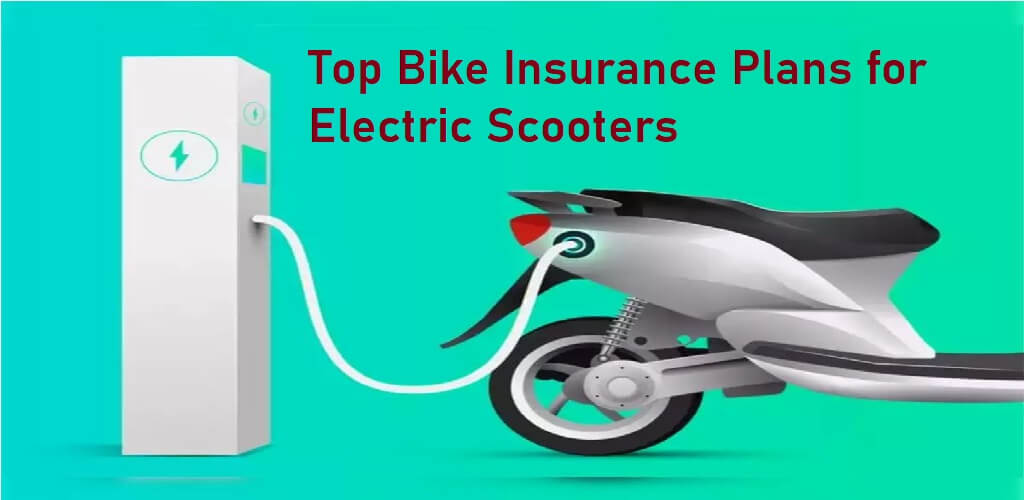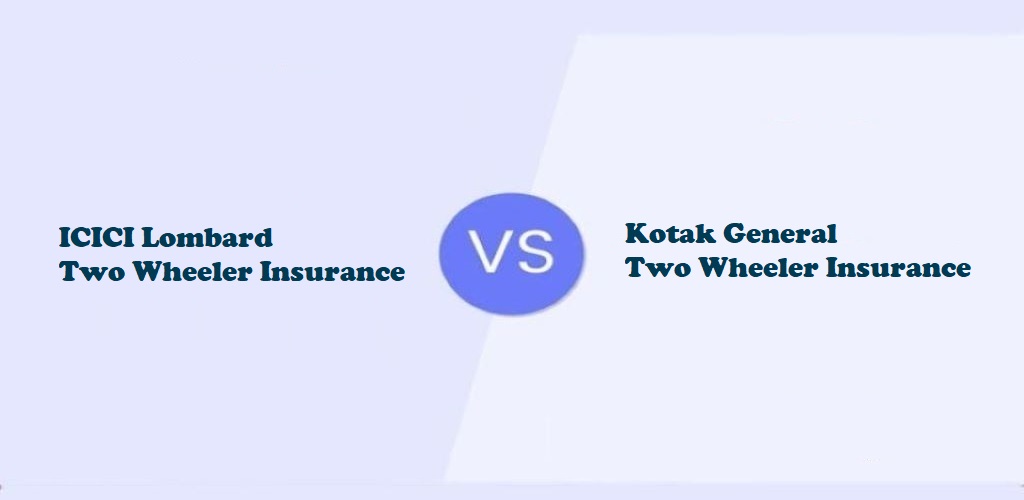If you are planning to own a two-wheeler, you must also be planning to purchase a two-wheeler insurance policy (comprehensive/third-party) to stay protected and secure. For either of the cases, it is always beneficial and wise to have a long term two wheeler policy to avoid the tension of renewals and to have a wider range of coverage. Apart from these two, a long term two wheeler policy is always more effective than a short term or single year policy. So, today we are going to discuss how the ball will be in your court if you go for the long-term two-wheeler insurance policy.
Why Choose Long-term Insurance for Two Wheelers?
When you want to protect your two-wheeler, you should go for the long-term bike insurance policy for better safety and security. Look at the following reasons to have a clear idea.
- You do not have to remember the renewal date yearly to keep your policy active.
- You can avail of a great deal of coverage for a longer period of time.
- You can stay protected against third party liabilities for a long time.
- You can avail of various discounts and lower premium rates and can save money.
- Once you have bought a multiyear policy, you can stay tension-free, and drive your bike out on the roads without any anxiety.
- The risk of having a lapsed policy or break-in policy gets lower.
- You can also fight against inflation with the help of a long-term two-wheeler policy.
Benefits of Long-term Two-wheeler Insurance Policy
To know the benefits of this insurance, let’s have a look at the following mentions.
Discounts Are Available for Long-term Two-wheeler Insurance
When an insurer offers a long term two-wheeler policy to the customer, it becomes able to save on administrative costs. For this reason, the insurer also offers a certain discount and incentive to the customers. Even, a few companies also offer the consumers a discount on the optional own damage cover. So, the long term policy is not only giving you wider coverage but also helps you to save money.
Two-wheeler Insurance Renewal for a Long Time
Remembering the date of your insurance policies is a hectic job as you have other commitments as well. But it is also very much important to keep in mind, that otherwise, your policy will no longer remain active and you cannot avail of the benefits and facilities of the policy. So, in that case, if you prefer the long term policy, suppose a two-wheeler policy for 3 years, you can get the coverage for up to 3 years and you do not have to worry about the renewals.
The term long-term, itself says that the policy is there to give you the coverage for a longer period of time than the other short-term policies. In this case, you do not have to worry frequently about your policy expiration or other related matters. When you know that you are protected for a long period of time, you can go out safely and without any tension.
Premium Rates for Long-term Two-wheeler Insurance
As IRDAI regulates third party motor vehicle insurance, it also determines the premium amount for the same. As a result of that, no insurance company can sell a third party motor insurance plan for more than the fixed amount. But the IRDA is hiking the price of this third party liability insurance almost at the rate of 20% every year. As a result, if you buy a single year policy, you need to pay an almost 20% higher premium in the next year. In this case, if you buy a long term policy, your renewal amount will the same and you can avoid inflation and save money.
No Claim Bonus in Long-term Bike Insurance (NCB)
If you do not want to lose any claim bonus benefit, it is always beneficial to buy a long term two wheeler policy because if you forget to renew the policy on time, you might lose the NCB. This risk is lower in the case of long term policies, and also you do not have to keep track of the accumulated NCB every year. Remember, the NCB benefit usually is the 20% for a claim-free year that can go up to the maximum limit of 50%, and a few insurers offer a slightly higher NCB for a multiyear policy.
Avoid the break-in policies
Suppose, you have not renewed your bike insurance policy for the past two years, and now you want to revive or buy a new two-wheeler policy. In this case, your insurer may want to have an inspection of your bike as there is a considerable gap between the policies. These policies are generally known as break-in policies. Now, the insurer may reject your application for revival or buying a new policy if they have found that your bike is not in the insurable condition as per their terms and conditions. Even if your application is accepted, the premium of this will be higher than usual, and the IDV will be affected as well. So, to avoid all these complexities, you should go for a multiyear policy.
Term/cancellation of Long-term Two-wheeled Insurance Policy
In certain cases, some insurers also offer their customers refunds if the policy is terminated or cancelled. This facility is not available for the single year policies. Even if you want to port your policy to another insurer, you can also transfer the NCB benefit.
Difference Between Long Term & Short Term Two-wheeler Insurance
Before buying a two-wheeler insurance policy, you need to know the difference between a short term and long term two wheeler plan, only then you can have a comprehensive idea about it and choose an ideal one for yourself. Here are the differences.
| Parameters | Long term policy | Short term policy |
| Coverage | Multiyear bike insurance policies usually come with a sack full of benefits and facilities. It is designed to offer you a wide range of coverage. | A short term bike insurance policy may not address every need of yours as usually, it offers lesser coverage than a multiyear policy. |
| Price | As this type of policy is designed with wider coverage, the price of it is little higher. Still, the coverage you would get for it is commendable. | In comparison with a multiyear policy, short-term policies are cheaper. However, when it comes to the safety and security of you and your beloved ones, there should not be any compromise. |
| Policy renewal date | If your policy is for 3 or 5 years, you need to pay the renewal amount once in 3 or 5 years respectively. | For short-term or single year policy, you need to pay the premium every year on time, regularly. |
| Flexibility | If you want to make any changes to your policy such as inclusion or exclusion of any add-on cover, you can do it only at the time of the renewal. Since you renew a multiyear policy once every 3 or 5 years, the scope of the modification of your policy is lower. | Every year at the time of renewal, you can make necessary changes to your policy as per your need. So, these policies are more flexible. |
| Tendency of having lapsed policy | For a long term policy, you do not have to worry about the frequent and yearly renewal as the name itself suggests. So, in this case, the chance of having an expired policy is very lower. | In this case, it is very likely to forget the renewal date as it has to be the yearly renewal. If you forget to pay the renewal amount even within the grace period, your policy will be void. |
| NCB benefit | Long-term insurance policy is offered with higher quantum of NCB discount compared to a short-term insurance policy. | In the case of this type of policy, you will still get the NCB benefit, but at a lower rate. |
| Add-ons | Long-term policies offer fewer additional benefits. | Short-term policies come with a wide range of add-on covers. |
| Effect of inflation | A multiyear policy is more or less immune to the inflation rate. | The price of a third party insurance policy is hiking at the rate of almost 20% per year. So, short-term policies get highly affected by inflation. |
How Does Long Term 2-Wheeler Insurance Work?
Suppose, Mr. Sinha has bought a brand new bike from the company TVS. Now, he wants to get a comprehensive two-wheeler insurance policy for it. After inspecting the insurance market, he has chosen HDFC ERGO General Insurance for his bike. He has decided to go for the 3-year comprehensive bike insurance policy of the insurer.
Now, for buying the policy, he has visited the official website of the company and selected his desired plan. He has put the required details and also selected an add-on cover according to his convenience. Let us find out how much premium amount he has to pay for this policy.
| Parameters | Values |
| Bike model | TVS Jupiter 125 DISC CC |
| City of registration | Kolkata |
| Condition of the bike | Brand New |
| Registration Year | 2021 |
| Insured Declared Value (IDV) | Rs. 56,984 |
| Add-on Cover | Legal liability cover for paid driver |
| Eligible NCB | 20% |
| Compulsory personal accident cover | Yes |
| Total Premium | Rs. 5093 |
| Premium Break-up | Basic Premium – Rs. 1300 NCB Discount (20%) – Rs. 260 Third party liability premium – Rs. 2142 Rs. 15 lakhs PA cover for owner driver (3 years) – Rs. 984 Legal liability for paid driver – Rs. 150 Goods and service tax (18%) – Rs. 777 |
After 1 year, he met with an accident and damaged his bike along with the third-party damages. Instead of paying from his own pocket, he files a claim against his bike insurance policy, gets his bike repaired in HDFC partnered network garage and takes care of third-party liabilities.
Conclusion
It can be easily said that a long-term comprehensive two wheeler policy is far more beneficial than a single year policy. However, if you are going through any financial crisis, it is always advisable to have at least a third party liability insurance plan to avoid the legal complexities.








